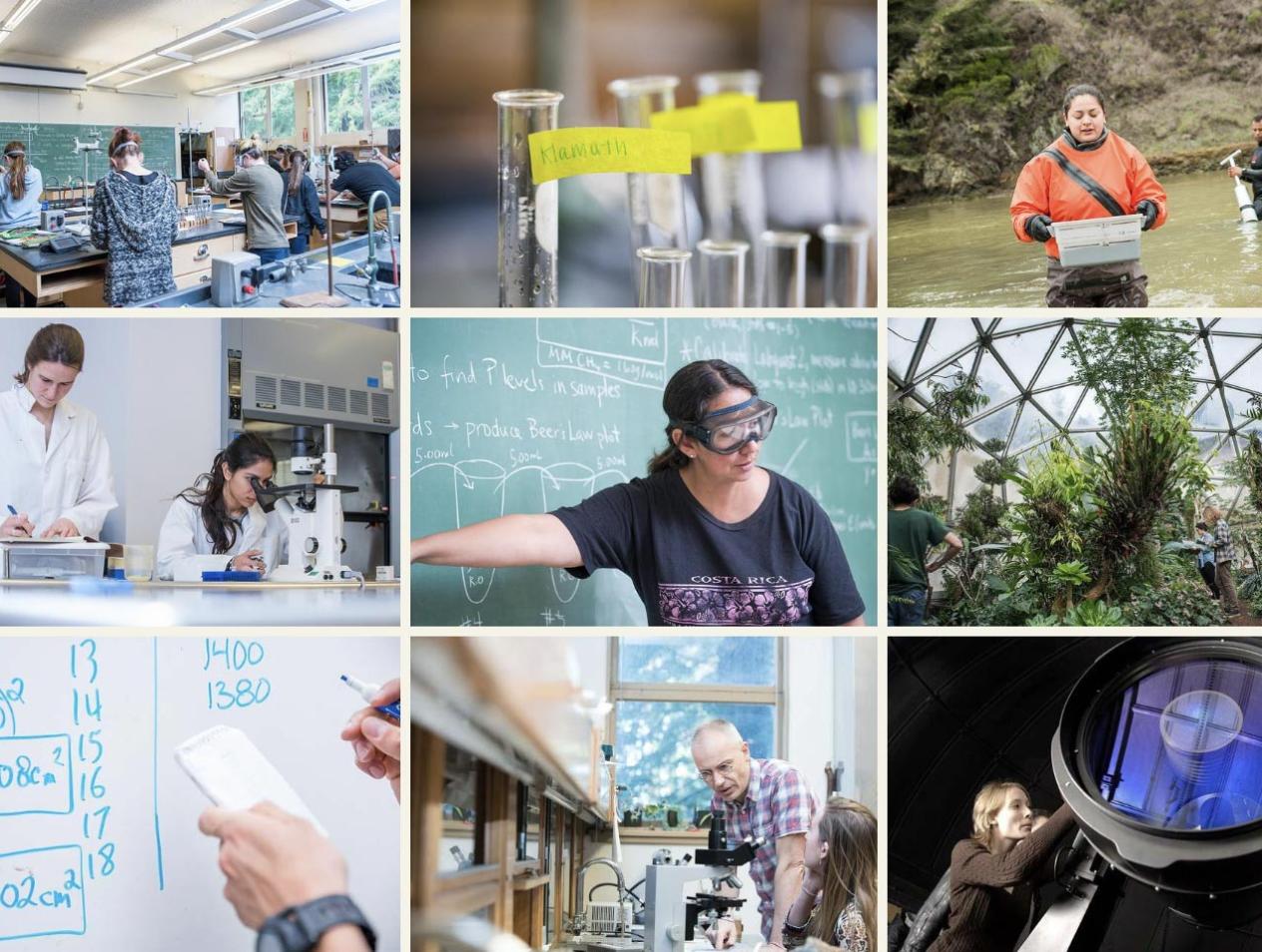Breadcrumb
Achievements
Find out what our students, faculty, and staff are being recognized for.
Karen Kiemnec-Tyburczy
Biological Sciences
Received a research grant from Save the Redwoods League to study the genetic diversity and abundance of Southern Torrent Salamanders in Redwood State and National Parks.
Buddhika Madurapperuma
Environmental Science & Management
Presented at SEUIARS2019 conference titled: Mapping and change detection of mangroves along the coastline of Ampara district from 2004 to 2019.
Laura Levy
Geology
Received a Research, Scholarship, and Creative Activities Program (RSCA) grant for $4980 to purchase equipment for her new Paleoclimate Lab.
Sintana Vergara
Environmental Resources Engineering
Published first authored paper "Greenhouse gas emissions from windrow composting of organic wastes: Patterns and Emissions Factors" in Environmental Research Letters. https://dx.doi.org/10.1088/1748-9326/ab5262
Cynthia Le Doux-Bloom
Fisheries Biology
Invited presenter, along with Drs. Peter Moyle and David Ostrach, to address the California Fish & Game Commssion on the 1996 Striped Bass Policy and its fishery implications.
Kjirsten Wayman
Chemistry
Participated as a member of the review committee that met in October 2019 at the Mt Cuba Center in Delaware to review the taxonomic and conservation status of the North American Trillium species. This meeting was a combined effort of the International Union of Conservation of Nature (IUCN), NatureServe, BioPark, and several Trillium experts and conservationists from across the country. Results from this meeting will be used for future conservation efforts and will be published by the IUCN for viewing by the general public.
Seafha Ramos
Wildlife
Seafha Ramos (Yurok/Karuk), National Science Foundation postdoctoral fellow, has been selected as a participant in "Lighting the Pathway to Faculty Careers for Natives in STEM". The program is offered by the American Indian Science and Engineering Society to increase the representation of American Indians, Alaska Natives, and Native Hawaiians in STEM faculty positions at universities across the country. Support is provided via professional conference attendance, access to a mentorship network, and a stipend. Dr. Ramos is hosted by the HSU Wildlife Department, with Dr. Matthew Johnson kindly serving as her mentor.
Cynthia Le Doux-Bloom, Darren Ward
Fisheries Biology
Co-hosted a two day workshop funded by STEM NET, Blue Lake Casio, and Tribal Tech to investigate the Klamath Basin Tribes' interest in developing new Native and Western sciences collaborations around dam removal for HSU students. Attendees includes Tribal members from the Klamath Tribes, Hoopa, Yurok, and others, Columbia River Inter-Tribal Fish Commission, Klamath River Renewal Corp., Klamath Basin Monitoring Program, UC Davis, and HSU staff and faculty.
Alison O'Dowd
Environmental Science & Management
Awarded $112,000 by Trinity River Restoration Program in collaboration with the Yurok and Hoopa Tribes to conduct a pulse release study on benthic macroinvertebrate drift and a seasonal inundation study of invertebrate community development
Cynthia Le Doux-Bloom
Fisheries Biology
Received $30,000 from Bureau of Reclamation proposal entitled, "Using juvenile lamprey to assess Tribal Drinking Water Quality on the Hoopa Valley Indian Reservation." Pilot Study, Phase II.






